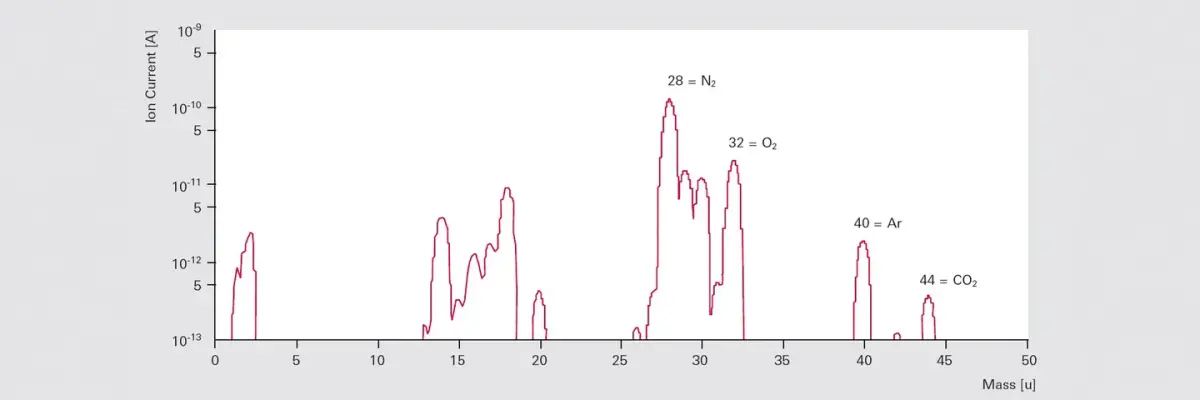7.3.1 Leak detection with helium
The leak detector must be calibrated prior to conducting a localizing leak detection or integral leakage test. A helium test leak integrated in the Pfeiffer Vacuum leak detector is used for this purpose. The calibration routine is started either when the leak detector starts up, at the touch of a button or automatically and runs according to a fixed software protocol. Following calibration, the leak detector is ready for use.
The user is kept constantly informed about the status of the unit and the leak rate measured through visual displays and acoustic signals. With the audible signal, the frequency of the signal tone rises as the leakage rate changes. The time at which the acoustic signal is given can be determined by the user by programming a threshold value. Visual signals can be read either on the control panel on the unit concerned or on a wired or wireless remote control unit. This allows leak detection to be carried out by just one person.
The following must always be observed when using helium as the test gas:
- Helium is lighter than air. So when helium is used in the atmosphere, the leak detection process should always begin at the highest point of the test specimen. This prevents a false signal being emitted due to helium rising at a leak above where the current test is being conducted. The upward flow of helium can be interrupted however by air currents. In cleanrooms with laminar gas flow from the ceiling to the floor the working direction is reversed.
- Excessive amounts of the test gas should not be sprayed, as this can increase the concentration of helium in the ambient air. This results in an increased background signal in the leak detector and growing insensitivity during the test.
- If the backing pump of the leak detector used or an auxiliary pump are oil-lubricated, then helium accumulates in the exhaust space in the backing pump and dissolves in the oil, and can diffuse back to the high vacuum area from this point. After detecting high leak rates, the use of gas ballast in the backing pump can help to discharge accumulated helium from the pump system and reduce the background signal that is indicated.
In the vacuum method, it is necessary to generate a sufficiently low vacuum to allow the leak detector to be operated at maximum sensitivity. Otherwise the leak detector will still indicate residual helium from the pumped-down ambient air.
Additional vacuum pumps (auxiliary pumps) with high pumping speeds must therefore often be used for large test specimens. In this case, the leak detector should be connected directly to the recipient pump ports for the large vacuum pump, i.e. parallel to the auxiliary pump.
When the auxiliary pump is running, the partial flow ratio of the system must be defined by measuring with a test leak in order to determine the leakage rate. Only through measuring is it possible to reliably indicate what proportion of the escaping test gas is pumped down by the auxiliary pump and what proportion can be detected in the leak detector.
When working with the sniffer probe, the pressure in the vessel must be at least 100 hPa higher than the ambient pressure. Due to the natural helium content of the air, the sensitivity of the sniffer method is lower than that of the vacuum method. Moreover, the delayed reaction of the leak detector to the inflowing helium must also be taken into consideration. The response time is also dependent on the length of the sniffer probe used.
Leak testing with helium or another test gas does not necessarily have to be carried out with the parameters that are decisive for the specification. Conversions are possible, for example, for various gases, gases and fluids, different pressure conditions, mass leak rates and volume leak rates, etc.
